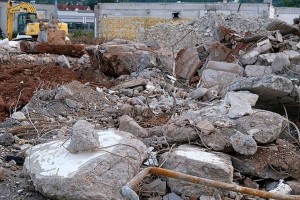The prevailing understanding relies on what some consider an insufficient level of opposition to Jewish sovereignty, humanity, and self-defense.
 Tel Aviv, June 28 – Academics looking for the hottest possible take on Israel’s on-the-ground moves to reduce its direct control over Palestinian lives have hit upon the real reason for the Disengagement of summer 2005: that the evacuation of thousands of Israelis from communities in the Gaza Strip and northern Samaria and the destruction of the homes there aimed not to eliminate a constant source of friction with the Arab population of the territory and thereby enhance security, but to cripple the local economy by removing major sources of employment that had been based in those communities.
Tel Aviv, June 28 – Academics looking for the hottest possible take on Israel’s on-the-ground moves to reduce its direct control over Palestinian lives have hit upon the real reason for the Disengagement of summer 2005: that the evacuation of thousands of Israelis from communities in the Gaza Strip and northern Samaria and the destruction of the homes there aimed not to eliminate a constant source of friction with the Arab population of the territory and thereby enhance security, but to cripple the local economy by removing major sources of employment that had been based in those communities.
Faculty and students at Tel Aviv University held a conference today at which they released their findings, following years of research into the leadup to the Disengagement and its outcome. The conference, as detailed in materials distributed there, aimed to arrive at the least charitable interpretation of the move by Israel, since the prevailing understanding of it even in academic circles relied on what the organizers consider an insufficient level of opposition to Jewish sovereignty, humanity, and self-defense.
“For the last thirteen years the best our colleagues have been able to come up with is two parallel ideas: one, that the Disengagement demonstrated the rightness of Palestinian armed struggle to effect change, to the exclusion of a negotiated resolution,” explained Professor of Political Science Hugh Briss. “While that certainly resonates, we believe it fails to take into account the need to pursue an active exploration of how and why what Israel did was automatically wrong – that lens must form the basis of every analysis.”
“The second idea holds that the Disengagement aimed to short-circuit any movement toward an independent Palestinian state,” he continued. “That’s pretty vanilla as far as we’re concerned – we’ve heard it all before. Neither of those approaches comes close to the kind of visceral evil that we must impute to Israel. Fortunately, we have arrived at an explanation that meets that criterion.”
Thousands of Arab Gaza residents found employment in the enterprises located in the 21 communities removed that summer, and the Disengagement saw the disassembly and relocated of most of the businesses elsewhere. While a handful of greenhouses and other facilities stayed behind intact, within a few days of the Israelis’ departure the local population looted and destroyed whatever economic potential remained, often with participation of Palestinian law enforcement agents. Conference organizers maintain that Israel planned even that development, so that not a single economic resource might help the people of Gaza out of the economic doldrums.
Please support our work through Patreon.



